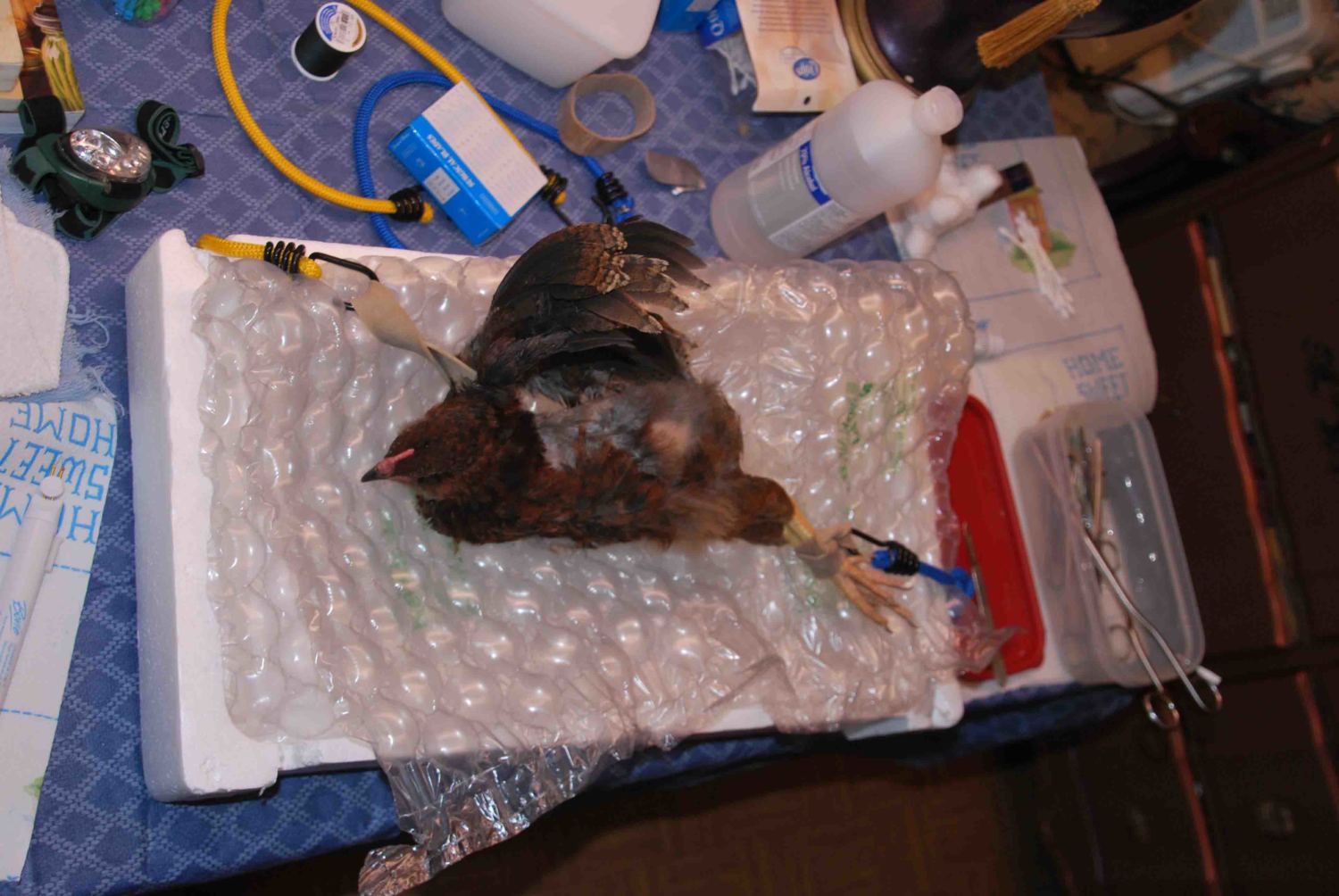
Some of the supplies. My instructor had a cool low tech "table" a piece of packing styrofoam and large bubble wrap. She said the slight stretching of the bird is ness. to cut the correct location. She put wide bands at the wing and feet and secured them w/ bungee.

The feathers in the area were very easy to pluck and the bird didn't seem to care. She is pulling the skin back so that her inscision of skin and muscle will not line up. She is going between the last two ribs. This pic doesn't show it well but there is a marked depression you cannot miss between the top of the thigh and the bottom rib.

This is the beginning of the skin inscision. She cuts the skin only on the first pass.
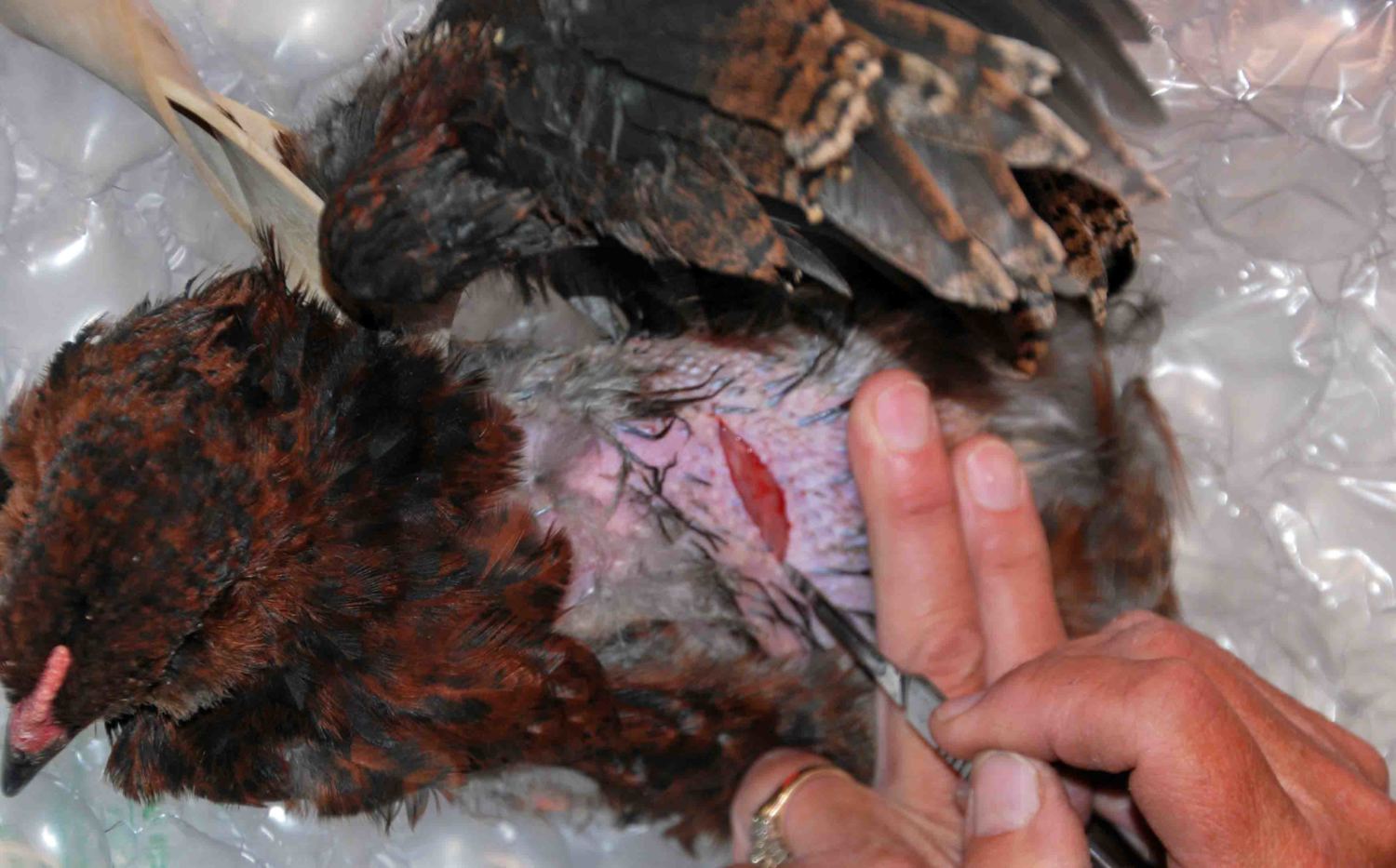
This is the completed skin cut
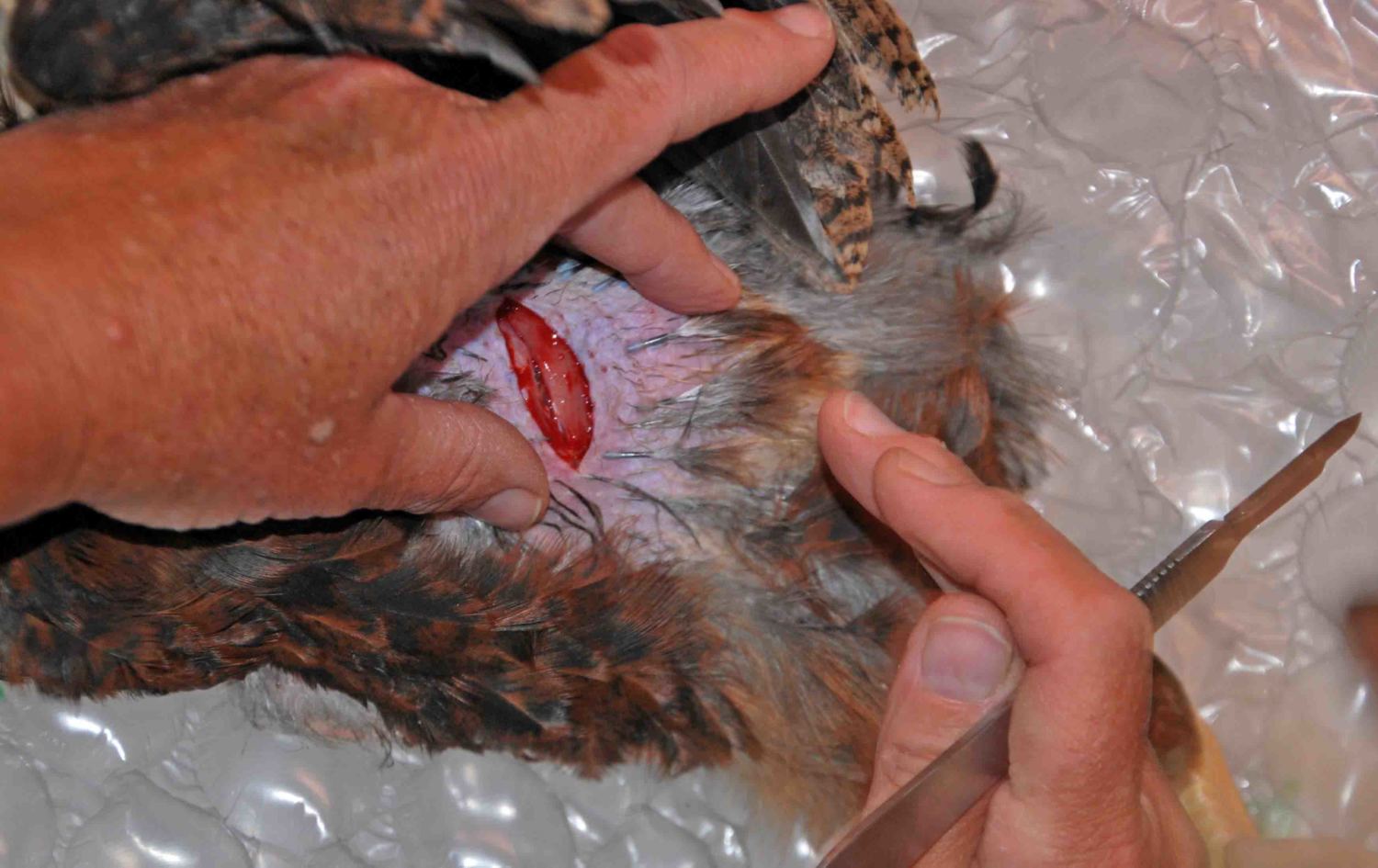
She adjusted the skin opening over the area of the muscle she was cutting. With the exposed muscle it was easier to see the correct place to cut.

retracting the opening to see and breaking the membrane for a view into the cavity. You can see intestine it this shot.

here you can see the tool she used to tear away the membrane (the piece of flesh diagonally from the end of the tool)

The object to the left with the slightly more yellow color is the teste, the uppermost one, the others are intestine

This is the modified straw and wire gripper, she gently twisted the straw to detatch it from the bird, but it just wouldn't easily detatch, so she had a plan B

here she is still trying to twist it.

she had a cauderizing tool, it worked well to seperate the teste from the bird. She bought it online she said it was around $50

here you can see the connective tissue being cauderized
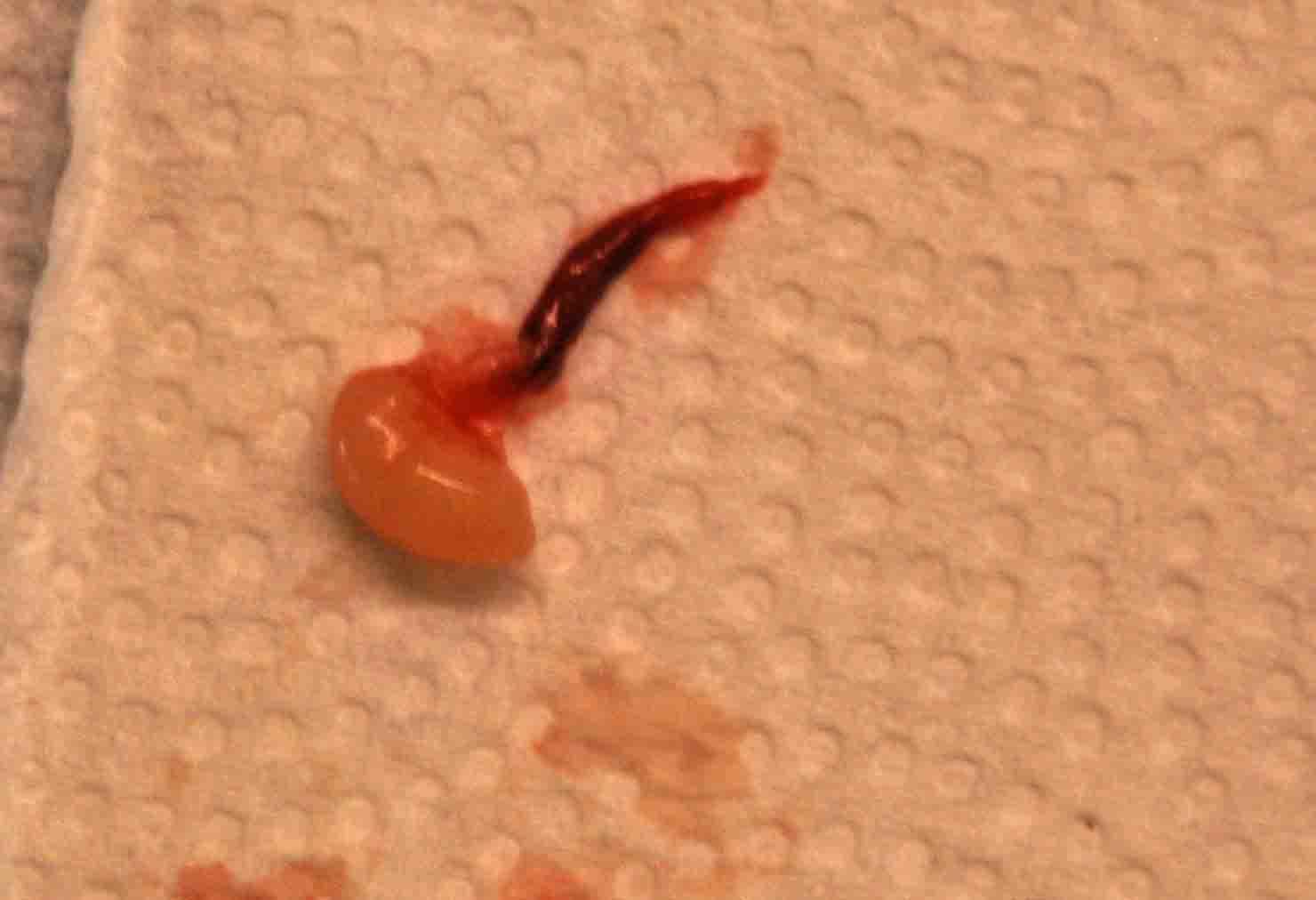
and here it is out

Here is the second teste, she goes in through the same opening. You can see the second membrane that has to be removed before the teste can be clearly seen. She removes it w/ the same modified straw, she said the second one cannot be cauderized, at least through the same opening.

couple of stitches w/ sewing thread, but she uses a suture needle, she said regular sewing needles just were not sharp enough, there was way to much tugging of the skin

all stitched up
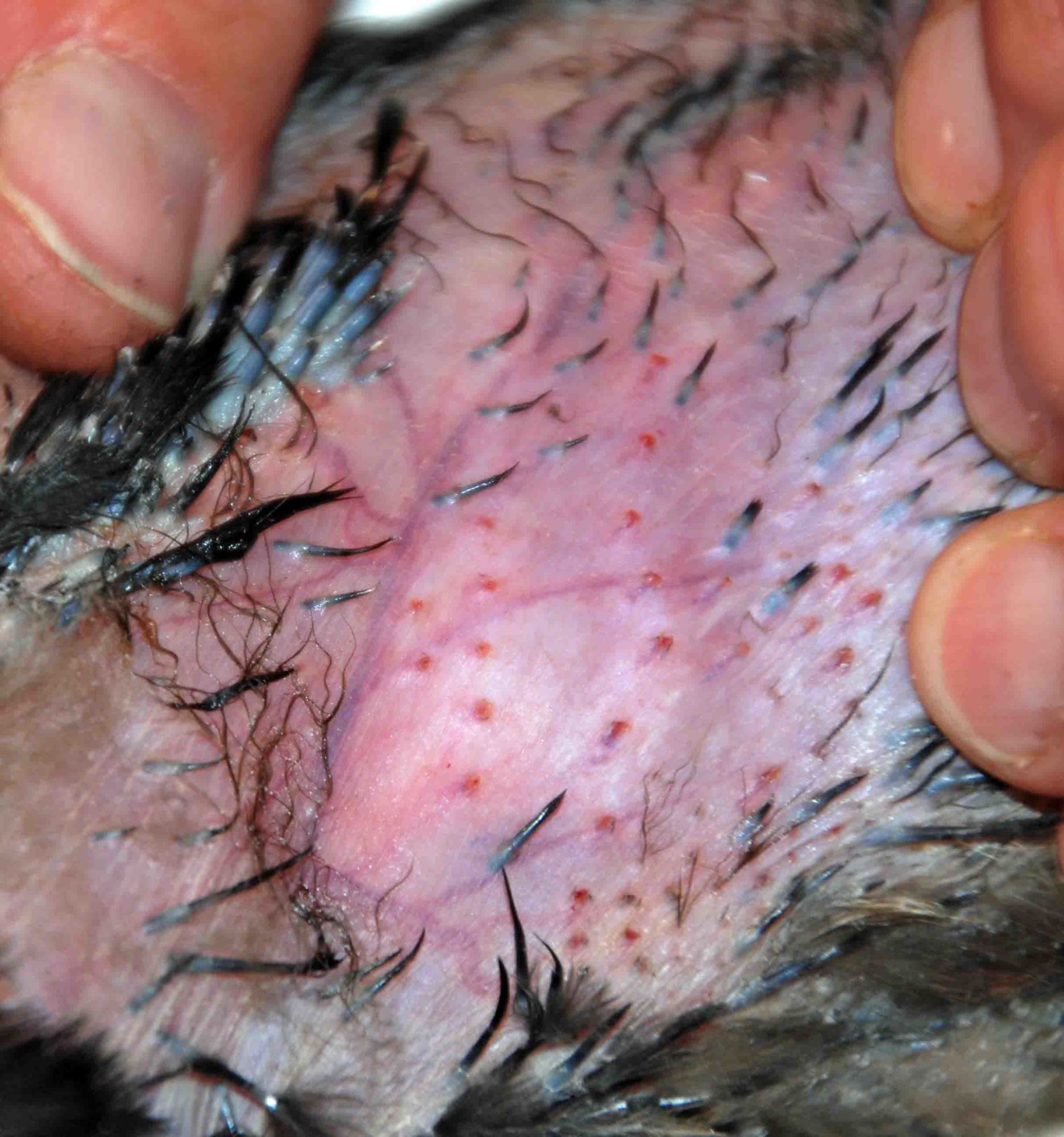
She uses alchohol on a cotton ball to swab the area and check for blood vessels before cutting anything at all, and plans her cuts where there are no blood vessels to lessen blood loss. It is like magic these were not very visible if at all before she swabbed with the alchohol.

I took several pics to try and show placement, but very few showed the detail and landmarks that were clearly visible in real life. this was the closest she stated how important the slight stretching of the bird is to locate landmarks easily there is a definate valley between the last rib and the thigh, the muscle cut needs to be between the last two ribs.
Sorry for the amount of pics, I took many more and tried to narrow it down to just the essentials to tell a complete story.
I want to make clear this isn't my information, I was the student. The woman showing me how to do this has an amazing success rate, she has only lost one bird total and that was to a respiratory infection, she has even caponized older birds then is recomended (special circumstances made this ness she doesn't do it regularly)and had no fatalities.


